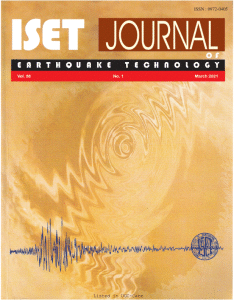Home > Issues & Journals
45th ISET Annual Lecture: Instability of Mountain Slopes Undergoing Long-Term Effects of Fault Action
I. Towhata
Paper No.: 589
|
Vol.: 61
|
No.: 4
|
December, 2024
|
pp. 107-120

Abstract
This paper addresses the relationship between earthquake-induced disasters and fault activities. Although the coseismic landslide was one of the important issues in the previous century, the changing life style in this century requires new perspectives. First, case histories are investigated to reveal that many coseismic landslides occur along faults, which are either causative or existing nonactive. Second, this point is discussed more in detail by taking example landslides along several existing faults. In particular, those faults with very long history, which have been active for millions of years or tens of millions years, are studied. Because of the kilometers of accumulated fault dis-location along such a fault, the nearby rock mass has been disrupted mechanically and is prone to erosion. Thus, valleys are formed in mountains and big alluvial fans are formed in the downstream area. This big size of alluvial fan means slope instability in the upstream region that results in the higher risk of flash floods and debris flows. Finally, the discussion is made of two fault-related problems. The first one is the recent experiences in Türkiye in 2023 where fault rupture propagated very fast. This phenomenon is called supershear and produces strong shaking with elongated shaking period towards the end tip of the causative fault. This kind of ground shaking is destructive to structures and is seemingly one of the main cause of major damage as occurred in Türkiye. Another fault-related problem is the tectonic uplift that occurred with a significant extent during the 2024 Noto Peninsula earthquake, Japan, and hindered the operation of harbors during the emergency.
Keywords: Fault, Slope Instability, Erosion, Supershear, Tectonic Uplift
©2025. ISET. All Rights Reserved.